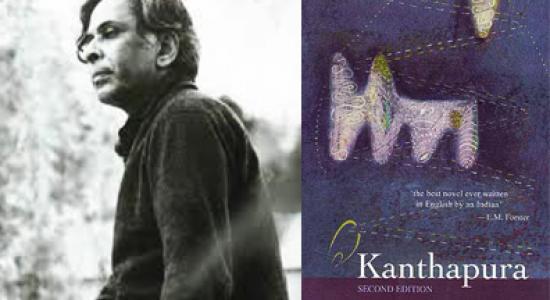Kanthapura: Probing non- violent questions

Raja Rao’s novel Kanthapura (1938) is the first major Indian novel in English. It is a fictional but realistic account of how a great majority of people in India lived their lives under the British rule and how they responded to the ideas and ideals of Indian nationalism. Kanthapura depicts the story of an Indian village during the British Raj, especially how Gandhi’s struggle for freedome came to a typical village, Kanthapura which is an imaginary village like Hardy’s Wessex. The novel is narrated in form of a sthal purana by an old lady in the village, Achakka. Author follows the traditional Indian narrative technique here.
It is a typical Indian village with entrenched caste hierarchy where there are separate spaces for Brahmins, Sudras and Pariahs in Kanthapura. Despite these hierarchies, villagers gather for traditional festivals such as sankara jayanti, kartik purnima, ganes jayanti and dasara etc. The Story happens in a period when Mahatma Gandhi became the pivotal figure in India’s independent movement. Kanthapura is an enchanting story of how the independence movement becomes a tragic reality in a tiny and secluded village in South India.
The focus of the novel is on two leaders- Gandhi and Moorthy, the saintly hero of the novel. It is Moorthy who takes the initiative to spread the message of Gandhi among his people in Kanthapura. He teaches the villagers Gandhi’s messages of Ahimsa and evokes an overwhelming response among villagers who unite in common cause, to break British laws and fight against social evils like untouchability. Moorthy has several sympathetic souls with him: Rangamma, the kind lady and a patron for harikatha celebrations, Ratna, the young widowed daughter of Kamalamma, Rangamma’s sister, Patel Range Gowda, the revenue collector, and others. But there are also sceptics, like the foul mouthed Venkamma. His own mother is much concerned about Moorthy’s mixing with the low caste pariahs. Indeed, when someone spreads the rumour that the Swami – the priest; upholder of dharma – has threatened the villagers with excommunication if Moorthy continues to go around with the pariahs, Naraamma is terribly upset; she sobs and shivers and soon dies. Moorthy continues his campaigning to make people join Gandhian struggle for freedom. Slowly people get attracted to the movement and started to line up behind Moorthy. Story continues as the movement goes through different turns.
Raja Rao doesn’t ignore the role of women in the movement. We see men and women in Kanthapura march behind Moorthy altogether with their hands joined. While Moorthy spent his days in prison, the women of Kanthapura took charge of the struggle for freedom. They formed Women’s Volunteer Corps under the leadership of Rangamma who instilled patriotism among the women by presenting the historical figures like Laxmi Bai of thansi, rajput princess, Sarojini Naidu etc.
At the end of the novel when all men including Moorthy get arrested, women decide to burn down what is left in their village rather than returning to it. They realize life can never be the same without their Moorthy, husbands and children. The concluding section brings the tale full circle, fourteen months later, where there is eager anticipation of Swaraj, or independence for India. Of the male heroes, only Patel Range Gowda returns briefly to Kanthapura, yet the villagers feel blessed by the goddess Kenchamma.
Gandhi’s non-violent movement meets victory at the larger context by 1947 but Kanthapura shows us the picture of a village which actively participated in the struggle and lost everything. An entire village practice Gandhi’s non-violence without any compromise. They don’t see any difference between offensive violence and defensive violence- violence is all the same and is sin. We see in the novel Moorthy, the Gandhian leader of the village saying “monsters monsters, yes they may be, but we are out to convert them, The Mahatma says we should convert them, and we shall convert them. Our will and our love will convert them” (p.229). People were advised to be patient and love the enemy. According to this preaching ‘love your enemy’, Puttanna a woman of Kanthapura who gets raped, is supposed to love the man who raped her. In this respect Kanthapura raises questions about non- violent movement’s concerns about people at the ground level or how Gandhi’s non-violent movement protected himself and his followers.























Connect
Connect with us on the following social media platforms.